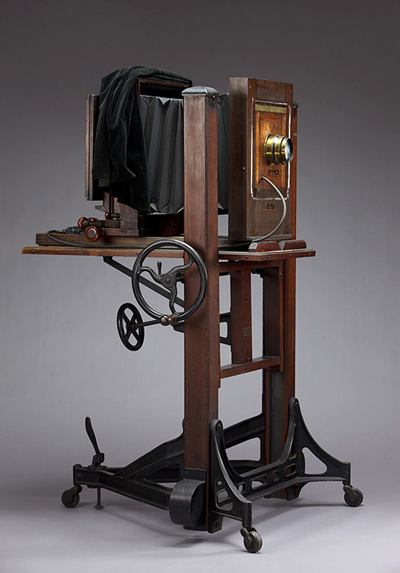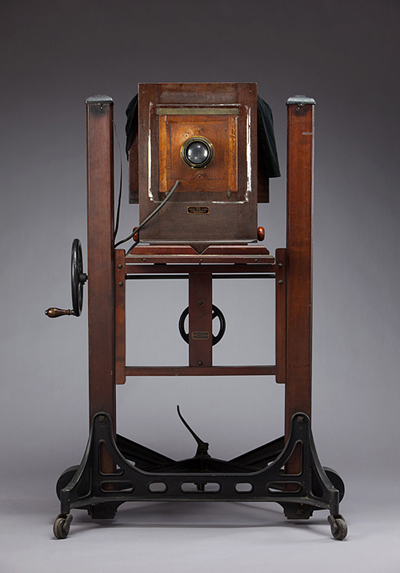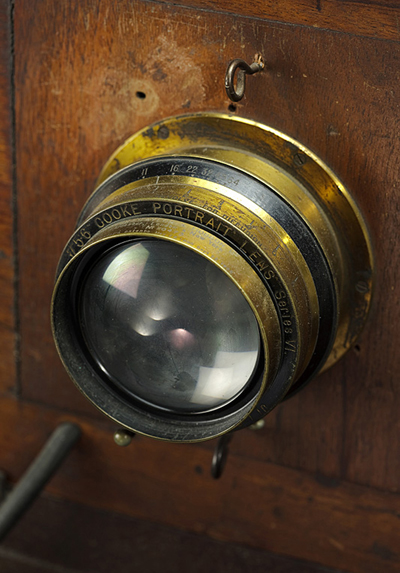| |
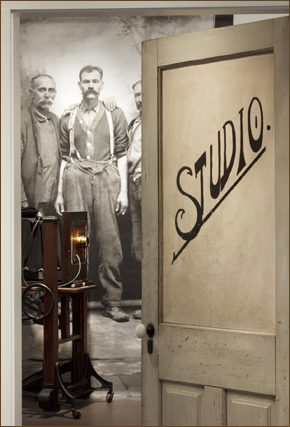 |
| |
As Good as Can Be on view in the MSV. Pictured are the door from Morrison's studio—which was painted by Hugh Morrison Jr.—and the camera used by Hugh Morrison Jr.
|

Imagine walking into the studio of Hugh Morrison Jr. and seeing his impressive Century Studio Camera No. 7A. The Folmer & Schwing Department of Eastman Kodak produced this camera in 1917. Morrison used it to shoot negatives on 8" x 10" or 5" x 7" glass plates and sheet film. This camera was Morrison's most important tool. In fact, it outlived him. His son Louis used it after his father's death and throughout the 1950s.
Century Studio Camera No. 7A
Made by the Folmer & Schwing Dept. of Eastman Kodak
Oak, poplar, brass, iron, and glass
ca. 1917
Courtesy of the Woodstock Museum, Morrison Collection
Now in the collection of the Woodstock Museum, this camera was used by Hugh Morrison Jr. from 1917 until his death in 1950. It is likely that many of the images featured in this online exhibition were captured using this camera.
Image 1 of 3
Century Studio Camera No. 7A
Made by the Folmer & Schwing Dept. of Eastman Kodak
Oak, poplar, brass, iron, and glass
ca. 1917
Courtesy of the Woodstock Museum, Morrison Collection
Now in the collection of the Woodstock Museum, this camera was used by Hugh Morrison Jr. from 1917 until his death in 1950. It is likely that many of the images featured in this online exhibition were captured using this camera.
Image 2 of 3
Century Studio Camera No. 7A
Made by the Folmer & Schwing Dept. of Eastman Kodak
Oak, poplar, brass, iron, and glass
ca. 1917
Courtesy of the Woodstock Museum, Morrison Collection
Now in the collection of the Woodstock Museum, this camera was used by Hugh Morrison Jr. from 1917 until his death in 1950. It is likely that many of the images featured in this online exhibition were captured using this camera.
Image 3 of 3
Morrison's sitters faced this camera, while behind them a decorative backdrop covered the windows of the second-floor studio. Once they were seated, Morrison used several methods to light his sitters. These included flash powder, as well as natural light provided by a skylight and additional windows on three sides of the room. As electric lighting improved, Morrison used freestanding lamps and overhead lighting. He also used reflectors and diffusers to direct and soften the light.
Morrison demanded much of his sitters. He directed their posture, arranged their clothing, and positioned their hands. When all was in order, the photographer ducked his head under a cloth behind the camera, checked the image, emerged and set the shutter, carefully pushed in the film holder at the back of the camera, pulled the dark slide, and squeezed the pneumatic blub to trigger the exposure at just the right moment. From start to finish, it was quite an experience, directed by Morrison's insistence on quality and inevitably rewarded by a finely crafted image.
|
|
|
 |
| This was the first newspaper advertisement for Morrison’s Studio as it appeared in the Shenandoah Herald on December 1, 1899. |
|
|
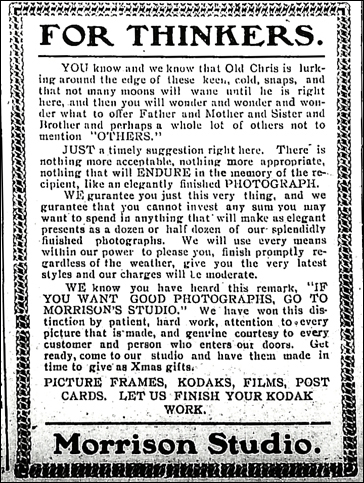 |
| The December 2, 1910, holiday ad for the Morrison Studio from the Shenandoah Herald. |
|
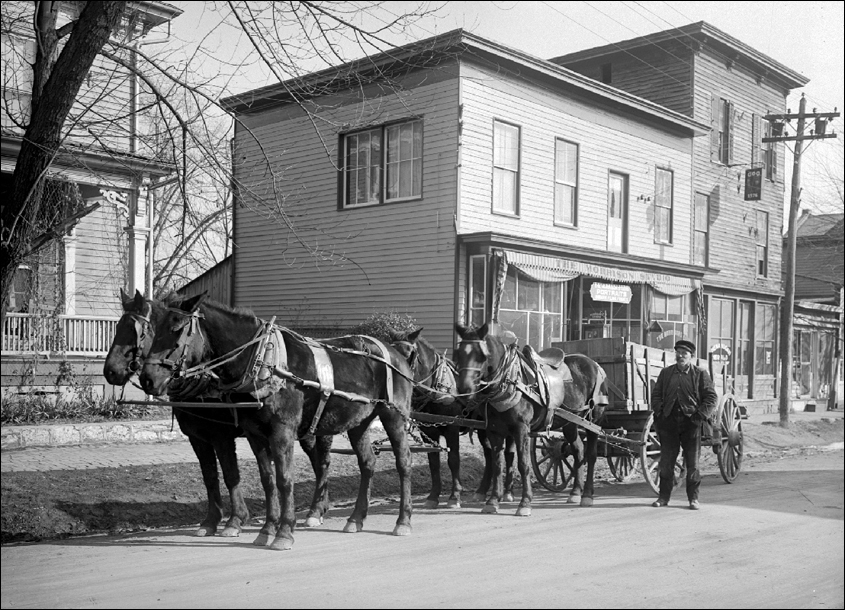 |
| In this image showing West Court Street in Woodstock, Virginia, the studio of Hugh Morrison Jr. is visible behind the wagon and team of horses. |
Inside the Studio | Children in the Studio | The Art of the Sitting
|











